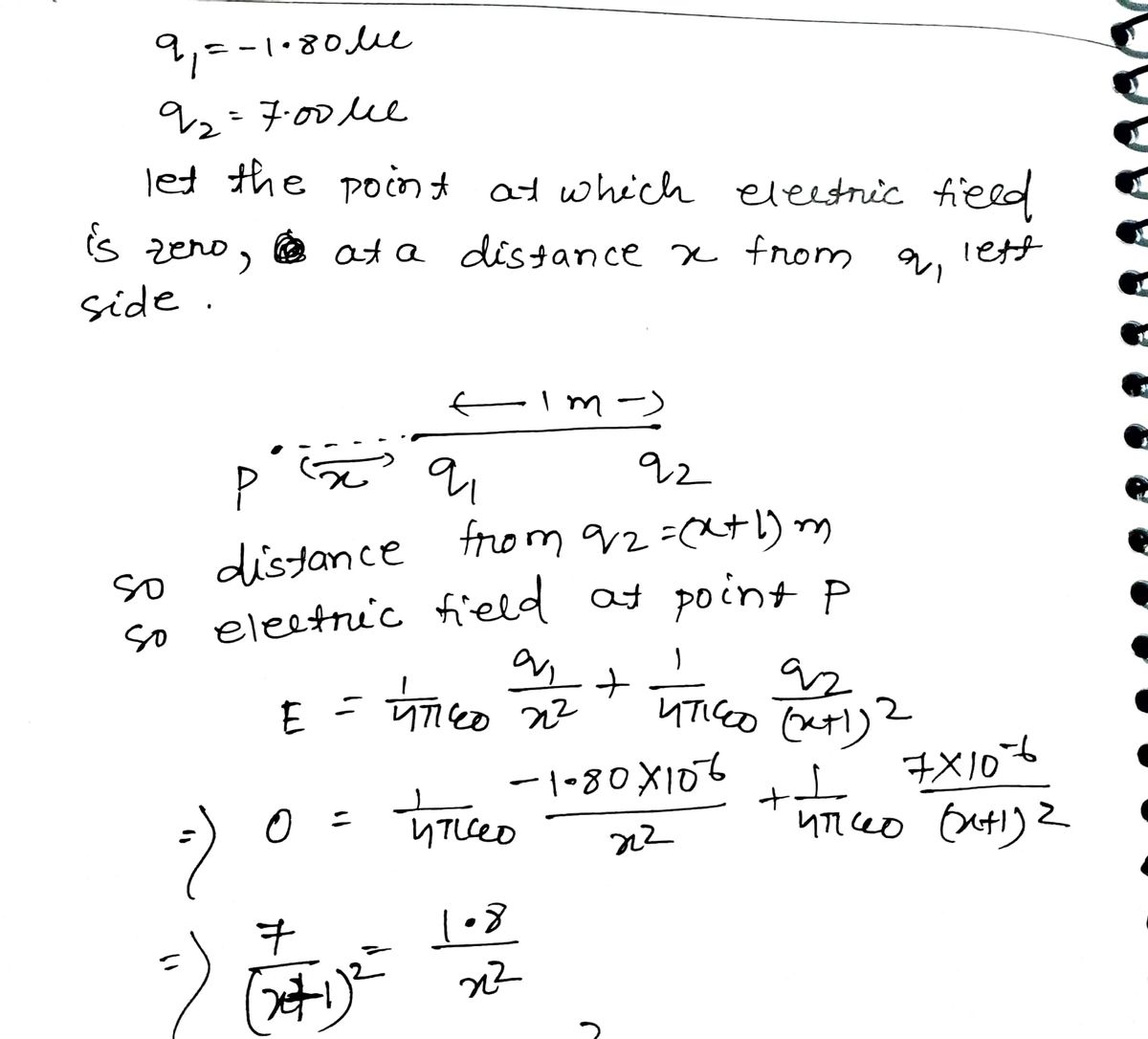In the figure below, determine the point (other than infinity) at which the electric field is zero. (Let q₁ = -1.80 μC and q₂ = 7.00 μC.) m ---Select--- e 9₁ 1.00 m 92
In the figure below, determine the point (other than infinity) at which the electric field is zero. (Let q₁ = -1.80 μC and q₂ = 7.00 μC.) m ---Select--- e 9₁ 1.00 m 92
Related questions
Question

Transcribed Image Text:In the image, you are asked to determine the point (other than infinity) at which the electric field is zero. Below the text, there is a diagram that shows two charges:
- \( q_1 \) is a negative charge with a value of \(-1.80 \, \mu \text{C}\).
- \( q_2 \) is a positive charge with a value of \(7.00 \, \mu \text{C}\).
The two charges are separated by a distance of \(1.00 \, \text{m}\).
There is a scale labeled with "m" and a dropdown labeled "---Select---" to input the distance from charge \( q_1 \) where the electric field is zero. The information icon indicates more details might be provided in an interactive context.
The problem asks you to find the specific location (other than infinity) along the line joining the charges where the electric field cancels out to zero.
Expert Solution
Step 1

Step by step
Solved in 2 steps with 2 images

Similar questions